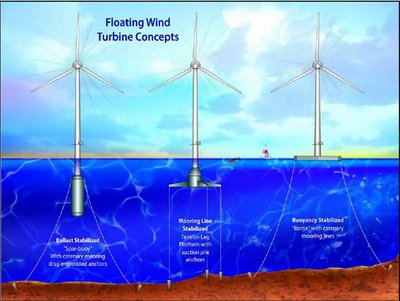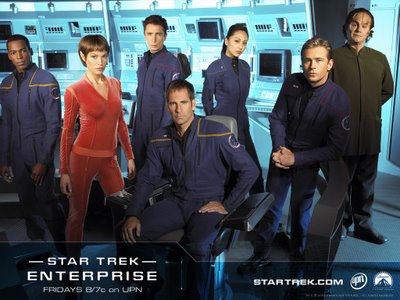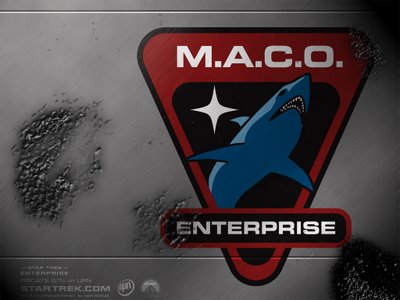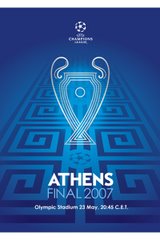2/12/06
5/11/06
EUROFIGHTER H JSF ΘΑ ΔΕΙΞΕΙ!!

 Ο ΑΡΧΗΓΟΣ ΤΗΣ ΠΟΛΕΜΙΚΗΣ ΜΑΣ ΑΕΡΟΠΟΡΙΑΣ ΜΑΖΙ ΜΕ ΤΟΝ ΟΜΟΛΟΓΟ ΤΟΥ ΓΕΡΜΑΝΟ ΣΕ ΠΤΗΣΗ ΕΠΙΔΕΙΞΗΣ.
Ο ΑΡΧΗΓΟΣ ΤΗΣ ΠΟΛΕΜΙΚΗΣ ΜΑΣ ΑΕΡΟΠΟΡΙΑΣ ΜΑΖΙ ΜΕ ΤΟΝ ΟΜΟΛΟΓΟ ΤΟΥ ΓΕΡΜΑΝΟ ΣΕ ΠΤΗΣΗ ΕΠΙΔΕΙΞΗΣ.
(Brexians lair)
by
brexians
στις
14:01
0
of you said:
![]()
Ετικέτες ΕΛΛΗΝΙΚΑ, AVIATION-SPACE, NEWS
αλλου τα κακαρισματα και αλλου γεννουν οι κοτες
ΑΠΕΡΓΙΕΣ, ΚΑΤΑΛΗΨΕΙΣ, ΡΑΤΣΙΣΜΟΣ, ΞΕΝΟΦΟΒΙΑ, ΟΜΑΔΙΚΟΙ ΒΙΑΣΜΟΙ ή ΠΑΡΤΟΥΖΕΣ (ΘΑ ΔΕΙΞΕΙ)!
ΚΑΙ ΣΤΗΝ ΦΑΣΙΣΤΙΚΗ ΑΜΕΡΙΚΗ ΜΙΛΑΝΕ ΚΑΙ ΑΣΧΟΛΟΥΝΤΑΙ ΜΕ ΤΟΝ ΠΟΛΙΤΙΣΜΟ ΜΑΣ….
ΕΙΝΑΙ ΝΤΡΟΠΗ ΜΑΣ ΜΕΓΑΛΗ ΜΑΣ ΝΤΡΟΠΗ!!!
(Brexians lair)
30/9/06
The Making of Modern Greece
An international conference at King's College London looks into the Greek experience of nation-building in the 19th century
A visionary, Rigas Ferraios - aka Velestinlis - was behind the 1797 publication in Vienna of a constitution for a future 'Hellenic Republic'. He paid for his ideals with his life shortly afterwards
EVERY Greek and every friend of the country knows the magic date of 1821, when the banner of revolution was raised against the empire of the Ottoman Turks, and the story of 'Modern Greece' is usually said to begin. What is less well known, but almost more important, is that just eleven years later, in 1832, the newly independent state of Hellas was recognised by international treaty, with the full rights of a sovereign nation. Greece was only the second of the new nation-states of modern Europe to be recognised in this way (pipped by just two years by... Belgium).
Historians of Modern Greece have not always paid sufficient attention to this fact, which places the Greek achievement of an independent nation-state, so early in the nineteenth century, in the forefront of the emergence of the modern political and intellectual movement known today as nationalism. Historians of the movement, whose origins are generally supposed to lie in the ferment of ideas that reached its peak before and after the French Revolution of 1789, may learn much from studying the Greek experience during those years. Nationalism is still a very potent force in world politics today - just think of the breakup of the former Yugoslavia, only a few years ago, or the present conflict in the Middle East. Those who try to understand the powerful appeal that the idea of the nation can have over the intellects and emotions of its members ought to interest themselves in charting, much more rigorously than has yet been done, the ferment of ideas that accompanied the birth and early years of the modern Greek state.
The year 1797 saw the publication, in Vienna, of a constitution for a future 'Hellenic Republic' by Rigas of Velestino (sometimes also known as Ferraios). No such state existed at the time, of course, and Rigas paid for his visionary ideals with his life shortly afterwards. But a century later, in 1896, the capital of independent Greece, Athens, was chosen by an international committee as the first venue of the newly revived Olympic Games, an event that established the greatest international sporting fixture of modern times. The achievement of nationhood had not only transformed Greece; it had also very radically changed ways of thinking, both among Greeks themselves and those who interacted with them.
How did this come about? How were the new ideas expressed and disseminated? What were the roles of philhellenes, critics and other observers outside the country? The answers to these and other related questions were sought at an international conference held on September 7-9, at King's College London, under the auspices of the college's Centre for Hellenic Studies, in collaboration with the Institute for Neohellenic Research, part of the National Hellenic Research Foundation in Athens.
Print of Rigas' so-called Charta (map)
The theme of the conference was "The Making of Modern Greece: Nationalism, Romanticism, and the Uses of the Past (1797-1896)". It attracted over 30 speakers, from institutions in Austria, France, Italy, and Russia, as well as from Greece, the UK and the US. The focus throughout was not so much on the well-known milestones on the way to the creation of the Greek nation-state, but rather on the thought-processes that underpinned nationalism and made that achievement possible. Speakers were encouraged whenever possible to bring a comparative dimension to their work so that Greek ideas, attitudes and achievements would be considered not in isolation but in relation to comparable trends elsewhere in Europe and the region.
Under the title "Comparative Nationalism", the concluding panel included Suzanne Marchand (Louisiana State University), a specialist on romanticism and philhellenism in 19th-century Germany, and Samim Akgonul, who researches in social history at the University of Strasbourg in France, and has written on the vexed issue of relations between Greece and his native Turkey during the 20th century. Also speaking in this session was Robert Holland, of the Institute of Commonwealth Studies, London, who has just published (with Diana Markides) ground-breaking work on successive British 'colonial' confrontations with Hellenism: in the Ionian Islands, in Crete and in Cyprus. Then, from the point of view of a classicist with a strong comparative interest in the way history has been written in modern and ancient times, Henrik Mouritsen, of the Department of Classics at King's, rounded off this session by suggesting that modern Greece has been much more successful than modern Italy in mobilising a vision of the country's classical past so as to capture the imagination and the loyalty of its citizens.
Other panels tackled such subjects as 'Religion and Nationalism', the juxtaposition of western European perspectives on emerging Greece with emergent Greek perspectives on their neighbours in the Balkans and Europe, and the nature and wider impact of the perennially controversial 'Language Question' in Greece. Archaeology, and attitudes to the progressive uncovering of a sometimes unfamiliar past, formed the backbone of two sessions. In others, speakers addressed questions of political and social developments (with particular reference to the Ionian Islands under British rule from 1815 to 1864), the role of literature in shaping the national imagination, and parallel developments in the daily press, in opera and music, in visual arts and in public architecture.
The first of two 'keynote' speeches was given by Paschalis Kitromilides, director of the Institute for Neohellenic Research and professor of Political Science at the University of Athens, who called for the study of Greek intellectual history to be 'canonised', through wider recognition by scholars in other countries dealing with comparative and theoretical issues. The second, by Anthony D Smith, applied the insights of the one of the most influential and original political scientists of the day to the specific case of Greece. A notable aspect of the conference was the interaction between distinguished experts in their respective fields (including, among others, Mark Mazower, Charles Stewart, Michael Llewellyn Smith, who was recently British ambassador to Greece, Peter Mackridge, Alexis Politis and Dimitris Tziovas) and younger scholars, now completing their doctorates or in junior academic positions, who will take the subject forward into the next generation.
So, what does the Greek experience of nation-building in the 19th century have to teach academics and policymakers in the globalised world of the 21st century? I cannot claim that our discussions in London produced any short, sharp, 'sound-bite' answers to the questions raised by the conference. But I do believe that, thanks to the many scholars who took part and to an excellent organising team on the ground, something worthwhile was achieved in defining the questions that future research will have to answer. In these fields of enquiry, just as in the 'hard' sciences, working out how to formulate your question properly can already take you a long way towards finding the answer.
* The writer is Koraes Professor of Modern Greek and Byzantine History, Language and Literature at King's College London. He contributed this review to the Athens News
ATHENS NEWS , 22/09/2006, page: A40 Article code: C13201A401
(Brexians lair)
by
brexians
στις
16:09
0
of you said:
![]()
18/9/06
Floating Ocean Windmills Designed to Generate More Power
By Ker ThanLiveScience Staff Writerposted: 18 September 200603:05 pm ET
Windmills that would float hundreds of miles out at sea could one day help satisfy our energy needs without being eyesores from land, scientists said today.
Offshore wind turbines are not new, but they typically stand on towers that have to be driven deep into the ocean floor. This arrangement only works in water depths of about 50 feet or less—close enough to shore that they are still visible.
Researchers at the Massachusetts Institute of Technology and the National Renewable Energy Laboratory (NREL) have designed a wind turbine that can be attached to a floating platform. Long steel cables would tether the corners of the floating platform to a concrete-block or other mooring system on the ocean floor, like a high-tech ship anchor. The setup is called a "tension leg platform," or TLP, and would be cheaper than fixed towers.
"You don't pay anything to be buoyant," said Paul Sclavounos, an MIT professor of mechanical engineering and naval architecture who was involved in the design.
The floating platforms to sway side to side but not bob up and down. Computer simulations suggest that even during hurricanes, the platforms would shift by only about three to six feet and that the bottom of the turbine blades would revolve well above the peak of even the highest wave. Dampers similar to those used to steady skyscrapers during high winds and earthquakes could be used to further reduce sideways motion, the researchers say.
Like the offshore windmills currently in use, the TLP's would use undersea cables to shuttle the electricity to land.
The researchers estimate their floater-mounted turbines could work in water depths ranging from about 100 to 650 feet. This means that in the northeastern United States, they could be placed about 30 to 100 miles out at sea. Because winds are stronger farther offshore, the floating windmills could also generate more energy—5.0 megawatts (MW), compared to 1.5 MW for onshore units and 3.5 MW for conventional offshore setups.
To save money, assembly of the TLP's could be done onshore—probably at a shipyard—and towed out to sea by a tugboat, the researchers say.
Sclavounos estimates that building and installing the TLP's should cost a third of what it costs to install current offshore tower windmills. Another advantage of using floating platforms is that the windmills could be moved around. If a company with 400 wind turbines in Boston needs more power in New York City, it can unhook some of their windmills and tow them south.
The researchers plan to install a half-scale prototype of their invention south of Cape Cod.
"We'd have a little unit sitting out there to show that this thing can float and behave the way we're saying it will," Sclavounos said.
16/9/06
Oktoberfest in Munich
2006: Sept. 16-Oct. 3
At the foot of the Bavaria statue, the huge Oktoberfest grounds also provide carousels, roller coasters and all the spectacular fun of the fair. Activities are accompanied by a program of events, including the Grand Entry of the Oktoberfest Landlords and Breweries, the Costume and Riflemen's Procession, and a concert involving all the brass bands represented at the "Wiesn".
Dates and times to rememberSept. 16, 10:45 a.m.: Grand Entry of the Oktoberfest Landlords and Breweries.
Sept. 16, noon: The famous "O'ZAPFT IS" (it's been tapped): Munich mayor taps the first keg of beer."It's tapped!"
Sept. 17, 10 a.m.: Oktoberfest Costume and Riflemen's Parade Sunday.
Sept. 24, 11 a.m.: Oktoberfest bands: 400 musicians at at the foot of the Bavaria statue.
Drinking hoursOpening day noon-10:30 p.m.Weekdays 10 a.m-10:30 p.m.Saturday, Sunday & holiday 9 a.m-10:30 p.m.Daily closing hour 11:30 p.m."Kδfers Wiesnschδnke" and "Weinzelt"open until 1 a.m., last drinks at 12:15 a.m
Sales standsOpening day 10 a.m-midnightMonday - Thursday 10 a.m-11:30 p.m.Friday 10.00 a.m-midnightSaturday & October 2 9 a.m-midnightSunday & October 3 9 a.m-11:30 p.m
Fairground attractions & sideshowsOpening day noon - midnightMonday - Thursday 10 a.m-11:30 p.m.Friday 10 a.m - midnightSaturday & October 2 10 a.m - midnightSunday & October 3 10 a.m - 11.30 p.m
How it beganCrown Prince Ludwig, later to become King Ludwig I, was married to Princess Therese of Saxony-Hildburghausen on Oct. 12, 1810. The citizens of Munich were invited to attend the festivities held on the fields in front of the city gates. The fields have been named Theresienwiese ("Theresa's fields") in honor of the Crown Princess ever since. Horse races marked the close of the event. The decision to repeat the horse races in the subsequent year gave rise to the tradition of the Oktoberfest.
The first Agricultural Show was added in 1811. The horse races, which were the oldest and - at one time - the most popular event of the festival are no longer held today. But the Agricultural Show is still held every three years during the Oktoberfest.
About the beerVisitors in the early years were able to quench their thirst at small beer stands which grew rapidly in number. In 1896 the beer stands were replaced by the first beer tents and halls set up by enterprising landlords with the backing of the breweries.
Today there are 14 large beer tents. About 30% of the year's beer-production of the big breweries in Munich are drunk during these two weeks.
And getting it 'delivered'About 1,600 of the 12,000 people employed at Oktoberfest are particularly famous - the waitresses who deliver the beer. They are between 18 and 80 and work long hours, hauling up to 10 steins at a time (usually 40-60 pounds), each full of a liter of beer, through rowdy crowds.
Tips are generous, because of a special Oktoberfest currency - the beer coupon. Company bosses treat employees, business owners, their regular clients and the city's senior citizens to the printed cardboard currency.
By the numbers
The official festival area covers 104 acres and has seating for 94,000 in the festival halls.
The festival grounds has about 1,440 toilets.
About 900 tons of waste will be generated during Oktoberfest.
The 2004 festival drew 6.1 million visitors. They consumed 6 million liters of beer and 200,000 liters of non-alcoholic beer.
Food consumption included 91 oxen, 56,036 pork knuckles, 487,487 chickens and 190,635 pairs of pork sausage.
In contrast, 1950 more than 1.5 million liters of beer was drunk and nearly 650,000 pairs of sausage eaten. 1970, the numbers had grown to nearly 4 million liters of beer and 800,000 pairs of sausage. While total (if not per capita) beer consumption has continued to rise, sausage sales have fallen dramatically.
(Brexians lair)
13/9/06
S-a deschis sezonul la angajari
Intorsi din concedii, atat directorii de resurse umane, cat si cei care-si cauta un job s-au pus pe treaba. Primii cauta noi angajati, ceilalti - noi locuri de munca.
In prima parte a lui septembrie, pe site-ul www.bestjobs.ro s-a inregistrat o crestere a numarului de anunturi cu peste 500 de oferte. La prima vedere, plusul de 10%-15% fata de lunile mai incete de vara nu este mare.
Insa, daca luam in calcul faptul ca mare parte din posturile scoase la concurs sunt in firmele mari, care pot angaja si cateva zeci de persoane printr-un singur anunt - de exemplu operator din call-center -, cresterea cererii de munca este mult mai spectaculoasa. Cele mai mari nume care deruleaza campanii de angajare provin din sectorul bancar, din retail, din IT si telecomunicatii.
Recuperatori si vanzatori la banci
Pe site-urile internet specializate sunt postate in prezent circa 200 de anunturi de angajare din partea bancilor. Marii angajatori sunt Raiffeisen, Bancpost, ING si Alphabank.
Toate au anuntat ca au planuri mari in ceea ce priveste extinderea retelei teritoriale prin deschiderea de noi unitati. Cum minimum pentru functionarea unei unitati este de sase-opt angajati, iar jucatorii de pe piata bancara au anuntat deschiderea a peste 600 de unitati in 2006, rezulta ca se cauta circa 4.000-5.000 de noi angajati. Cei mai cautati sunt vanzatorii si recuperatorii de credite. Concurenta este acerba. La un singur anunt postat pe bestjobs.ro de Raiffeisen s-au trimis peste 1.000 de CV-uri.
Si supermarketurile, si hipermarketurile deruleaza ample campanii de angajare. In prezent, se cauta peste 1.000 de persoane.
Mii de angajariin supermarketuri
Pe lista angajatorilor s-au inscris Carrefour, care va deschide un nou hipermarket la Constanta, in octombrie, pentru care are nevoie de 500 de angajati, Selgros (un magazin la Suceava), Kaufland (in Sibiu si Targu-Jiu).
Cele mai comune oferte de angajare sunt cele de casieri, lucratori comerciali si vanzatori. Pana in 2007 vor mai fi deschise hipermarketuri Carrefour in Cluj si Constanta, care vor crea circa 1.000 de noi locuri de munca. Alte retele comerciale in plina campanie de angajari sunt Baumax, Bricostore si Praktiker.
Client support in IT
Numele grele de pe piata IT, precum Microsoft, Oracle sau HP, au anuntat anul acesta ca isi vor extinde activitatea in Romania, prin deschiderea unor centre de suport tehnic.
Daca la inceput doar firmele de telefonie mobila si-au deschis centre de suport cu zeci de angajati, unde clientilor li se raspundea la intrebari, in prezent si greii la nivel mondial din IT si-au deschis astfel de centre in Romania.
Astfel, clientii internationali care le utilizeaza aplicatiile pot primi asistenta prin telefon si on-line. Numarul locurilor de munca nou-create este din nou de ordinul miilor.
"Cele doua divizii HP - biroul comercial si centrul de suport tehnic - au angajat, in medie, cate 70 de persoane pe luna", sustine Radu Enache, director executiv la HP Romania.
Potrivit acestuia, centrul de suport tehnic are in prezent circa 600 de angajati. Reprezentantii Microsoft au anuntat ca vor angaja circa 200 de persoane in centrul de suport tehnic, iar Oracle, care a ajuns deja la 450 de angajati, a anuntat ca nu este exclusa posibilitatea sa ajunga si la 700.
(Brexians lair)
by
brexians
στις
23:58
0
of you said:
![]()
Ετικέτες LIMBA ROMANA, NEWS
8/9/06
9/8/06
Basescu vrea sa faca din Delta prima destinatie turistica a Romaniei

Preluand modelul de promovare a Deltei Dunarii de la premierul Tariceanu, presedintele Traian Basescu a participat, ieri, la actiunea a??Salvati Delta Dunarii a?? Academia Catavencua??. Basescu este de parere ca la ora actuala a??Delta este murdara si trebuie sa o curatama??.
Presedintele a declarat ca de la 1 ianuarie 2007 Romania va primi 22 milioane de euro pentru curatarea Deltei Dunarii. De asemenea, seful statului considera ca a??pescarii trebuie sa se uneasca in asociatii pescaresti pentru a putea beneficia de fondurile europenea??. Aceasta intrucat din 2007 UE va aloca pisciculturii din Romania, si implicit din Delta, o jumatate de miliard de euro.
Ministrul mediului si gospodaririi apelor, Sulfina Barbu, prezenta si ea la eveniment, a afirmat ca legislatia in vigoare privind protectia Deltei Dunarii nu este suficient de aspra. Ea a adaugat ca in curand va promulga o alta lege care va proteja mai mult Delta si care va impiedica politicul sa influenteze negativ acest areal.
Sursa: Gardianul
MAY THE FORCE BE WITH YOU
by
brexians
στις
02:38
0
of you said:
![]()
Ετικέτες LIMBA ROMANA, NEWS, PLACES
25/7/06
Litoralul, sufocat de turisti
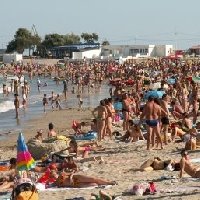
O suta de mii de turisti s-au inghesuit pe plaja.Sfarsitul de saptamana a adus pe litoral aproximativ 100.000 de turisti romani si straini. Pe Drumul National 39, care leaga Mangalia si restul statiunilor sudice de restul tarii, automobilele venite din toata tara au circulat bara la bara, situatia fiind aceeasi pe soselele litoralului.
Hotelierii au fost foarte multumiti de numarul de turisti sositi in aceasta perioada la mare, existand chiar posibilitatea ca sezonul sa se dovedeasca, la urma urmei, unul cu ceva profit, in ciuda criticilor aduse litoralului romanesc.
Cei aproximativ 100.000 de turisti, unii de week-end, altii veniti pe litoral in sejururi de minimum o saptamana, au impanzit si plajele. Inghesuiala nu prea a fost pe plajele neamenajate, cum sunt cele de la Olimp sau Cap Aurora, dar, cea mai mare concentrare de turisti pe metrul patrat se putea observa in Mangalia, Saturn, Neptun, Jupiter sau Costinesti.
Viermuiala pe plaja
Turistul venit la mare cu "cearsaful" si-a gasit un locsor pe nisip cu foarte mare greutate, inghesuindu-i pe cei deja sositi aici. Prosop langa prosop, pe langa care deseori nu poti calca, trupuri aproape lipite unul de celalalt, acesta a fost tabloul de ansamblu al celui mai aglomerat sfarsit de saptamana pe litoralul romanesc.
Nici sezlongul nu garanta mai multa intimitate. Asta pentru ca patronii plajelor concesionate au lipit sezlongurile stans unul de celalalt, fara a tine cont de cei cativa metri "regulamentari" ce ar fi trebuit sa revina fiecarui turist in parte.
Au venit la mare cu obiceiurile de-acasa
La Saturn si Mangalia sunt si cei mai multi turisti sositi in sudul litoralului. De aceea, plajele, tocmai pentru ca nu au prea multe dotari, se bucura de cei mai multi "clienti".
Turistii nu vin insa la mare fara propriile obiceiuri. Pe plaja acestia sparg seminte, iar cojile le arunca direct pe nisip, fumeaza continuu aruncand chistocurile tot pe nisip, iar cainii cu sau fara stapan se racoresc si ei in apa marii, desi teoretic este interzis acest lucru.
In plus, comerciantii de bratari din melci "Made in Thailand" si de "namol de Techirghiol", majoritatea minori tuciurii, te imbie sa le cumperi marfa, sub ochii mai mult decat ingaduitori ai politistilor de pe plaja.
Cum la finele saptamanii apele marii au fost destul de involburate, salvamarii au vaslit continuu pentru a preveni eventuale incidente, dar, de cele mai multe ori, insotiti de cate o "sirena" sau chiar mai multe.
Teribilistii i-au exasperat pe salvamari
Vremea pe litoral, la acest final de saptamana, a fost superba: peste 35 de grade Celsius in aer si o apa cu o temperatura de peste 24 de grade Celsius. Din pacate, marea a fost deosebit de agitata.
Pe toate foisoarele salvamarilor de pe litoral au fost arborate steagurile rosii sau albastre care semnifica "risc mare conditii improprii pentru inot". Din pacate, multi au ales sa isi riste viata in mod constient.
Salvamarii au intervenit pentru sute de turisti, pe care fie i-au resuscitat dupa ce fusesera luati de valurile de peste trei metri, fie i-au scos, chiar si cu sila, din apa involburata.
Marea nu are preferinte
"Chiar azi am scos cu forta, din valuri, pe unul dintre acestia, l-am luat la foisor si am incercat sa discutam cu el, ca nu are rost sa se inece in plin concediu.
Ne-a spus ca stie sa inoate foarte bine ca a venit la mare sa se distreze, nu sa stea pe mal, cu gura salvamarilor pe el. Noi nu putem, prin lege, sa ii obligam sa nu intre in mare pe turistii care vor cu tot dinadinsul sa faca acte de bravada, ii sfatuim prieteneste si cam atat", declara Marian, un salvamar in statiunea Jupiter.
Bilantul persoanelor decedate in acest week-end in apele marii a ajuns la cinci - un bucurestean de 39 de ani, inecat la Mamaia, un tulcean de 27 de ani, luat de valuri la Neptun, o persoana de 47 de ani, din satul Schitu, comuna Costinesti si un cuplu de tineri moldoveni, luati de ape la Eforie.
Sursa: Evenimentul Zilei
MAY THE FORCE BE WITH YOU
by
brexians
στις
01:33
0
of you said:
![]()
Ετικέτες LIMBA ROMANA, NEWS, PLACES
21/7/06
10 zile de razboi: Libanul distrus, Hezbollahul intact
Acestea au avut loc in urma unei incursiuni a armatei israeliene contra pozitiilor detiunte de combatantii Hezbollah in apropierea granitei cu Israelul.
Potrivit unui comunicat al armatei israeliene, doi militanti ai Hezbollah au fost ucisi, in timp ce trei soldati israelieni au fost raniti. Aviatia militara israeliana si-a continuat raidurile in estul Libanului, unde doi civili au fost raniti. In zorii zilei, circa 20 de avioane au participat la un bombardament masiv asupra unui presupus buncar al Hezbollahului, in sudul capitalei Beirut.
Peste 20 de tone de bombe au fost lansate asupra obiectivului vizat, insa miscarea Hezbollah afirma ca nu era vorba despre un buncar, ci despre o moschee in constructie. Surse israeliene afirmau ca acolo se ascundeau lideri ai gruparii, inclusiv seicul Hassan Nasrallah, informatie dezmintita prompt de Hezbollah.
Gruparea siita libaneza a anuntat ca rachetele sale ar fi lovit ieri sediul comandamentului militar israelian de la Safed, precum si orasele Tiberiada si Carmiel. Cu o seara in urma, doi copii au fost ucisi dupa un atac al Hezbollah asupra orasului Nazareth.
Bilantul violentelor de pana acum se ridica la peste 300 de morti in Liban si 29 de militari si civili ucisi in Israel.Exista temeri privind declansarea unei crize umanitare de proportii, in conditiile in care peste 500.000 de libanezi au fost nevoiti sa se refugieze din calea bombardamentelor.
Degradarea situatiei din Liban a determinat-o pe Louise Arbour, inaltul comisar ONU pentru drepturile omului, sa avertizeze ca actuala ofensiva s-ar putea incadra la crime de razboi. Referindu-se la numarul mare de victime, Arbour a atras atentia ca "persoanele aflate in pozitii de comanda si control ar putea fi inculpate pentru crime".
Washingtonul, somat sa intervina
Pe plan diplomatic, creste presiunea internationala vizand incetarea ostilitatilor din Orientul Mijlociu. Numerosi lideri europeni, precum si secretarul general al ONU, Kofi Annan, si-au inmultit apelurile la incetarea ostilitatilor, apeluri adresate atat partilor in conflict, cat si administratiei americane, singura in masura sa determine Israelul sa opreasca ofensiva.
"Cei care au influenta pentru a ajuta la rezolvarea crizei trebuie sa o faca repede, imediat, acum. Fiecare zi conteaza", a declarat inaltul reprezentant UE pentru politica externa, Javier Solana, la capatul unui turneu in Orientul Mijlociu.
Demnitarul european urma sa impartaseasca acest punct de vedere secretarului american de stat Condoleezza Rice, in cadrul intalnirii programate sa aiba loc joi seara la New York, la care urma sa participe si secretarul general al ONU, Kofi Annan.
Pe agenda discutiilor figureaza cererea Israelului privind crearea unei zone-tampon de 15 kilometri in sudul Libanului si trimitrea unei forte internationale in regiunea de conflict. Analistii apreciaza ca abia dupa clarificarea acestor aspecte, Rice va pleca in mult-asteptatul turneu in Orientul Mijlociu.
Ofensiva impopulara si ineficienta
Cele noua zile ale ofensivei israeliene in Liban nu par sa fi dat rezultatele scontate, scrie agentia France Presse, citand opiniile unor experti de la Ierusalim.
Atacurile sustinute ale armatei israeliene nu au reusit sa reduca frecventa tirurilor Hezbollah, sa decapiteze conducerea miscarii siite si nici sa-i goneasca pe militanti din regiunea de frontiera. "Este evident ca Israelul este intr-o situatie proasta. Tsahal (armata israeliana - n.r.) si-a supraestimat capacitatea de a distruge Hezbollahul", apreciaza analistul militar Reuven Pedatzur.
De aceeasi parere este si politologul Shaoul Mishal, specialist in miscarile islamiste, de la Universitatea din Tel Aviv. "Hezbollahul pare sa reziste, iar moralul lor pare intact", spune el, adaugand ca este o greseala sa crezi ca miscarea va putea fi distrusa doar pe cale militara.
Sursa: Evenimentul Zilei
by
brexians
στις
18:02
0
of you said:
![]()
Ετικέτες LIMBA ROMANA, NEWS, POLITICS

















